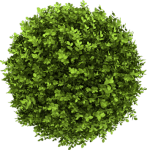Ever wonder why your backyard tree doesn’t thrive the way it used to? The answer may lie in when,not just how you prune it. While many homeowners view tree pruning as an occasional chore to clean up overgrown limbs or remove dead branches, the timing of pruning can make all the difference. Seasonal tree pruning—done at the right time of year can improve your tree’s health and structure. But is it truly necessary, or is it just a gardening myth passed down over generations? Let’s find it together in this comprehensive blog! We will explore the science and the strategy behind seasonal pruning and understand why our trees may need it more than anything.
Seasonal tree pruning is the practice of cutting back branches. This cutting is based on biological cycles of the tree and environmental conditions of the season rather than just pruning normally.
This is in accordance with the natural life pattern taken in growth and dormancy of the tree. There will be a different opportunity or risk per season:
The timing is not just a matter of convenience. It affects sap flow, energy reserves and wound healing. It also affects how much your tree is resistant to pests and disease.
Trees are living organisms. Their internal processes respond to light and temperature. In winter, most trees enter dormancy, thereby slowing down metabolism and conserving energy. So, pruning is quite helpful in this period as it puts less stress on the tree. It also reduces the chance of sap bleeding and leaves clean wounds that heal faster in spring.
During active growing seasons, trees are directing energy toward new leaves and flowers. Heavy pruning at this time can:
Seasonal pruning does not interrupt this rhythm. It ensures that cuts are made when the tree is best equipped to respond and recover.
Late winter is typically between January and March. Depending on the climate, it is ideal for most trees. Because:
Winter pruning is important for shade trees and fruit trees. Young Trees are equally important as well as they are still developing their canopy structure. Proper cuts at this stage promote strong and well-angled branches, reducing breakage.
Not all pruning should be reserved for winter. Summer pruning especially in mid to late summer, is also necessary:
Summer is also the best time to prune bleeder trees. For example, some species include maple and elm. These trees release excessive sap if they are cut during the dormant months, which isn’t harmful. But it can attract insects or create sticky messes.
Still, summer pruning must be conservative. Over-pruning during hot months can lead to sunscald or drought stress, especially during heatwaves.
Many assume that autumn is a good moment to prune. But in reality, fall is the riskiest season for cutting trees because:
Unless you are removing deadwood or hazardous limbs, pruning in the fall can be harmful. Just wait for winter if in doubt.
Tree Type Matters More Than You Think
Not all trees respond the same to seasonal pruning. Some species need a specific timing according to their biology.
If done during the wrong season, pruning can result in reduced flowering and delayed fruit production. It can also trigger sucker growth.
Safety and Structural Integrity
Seasonal pruning plays a key role in safety. Dead or weakened limbs can become hazards during storms or under snow load. Cutting these branches during winter or early spring reduces the risk of falling limbs and prevents damage. Moreover, trees pruned regularly allow more
While light pruning like removing small dead branches or shaping saplings can be done by homeowners. Larger pruning jobs often require professional knowledge. So it is important to hire a professional arborist. They have the right tools and training for climbing and safely removing large limbs.
Improper cuts such as “topping” or flush cuts can shorten the lifespan of a tree or lead to rot. A professional approach avoids costly mistakes.
Seasonal tree pruning isn’t a luxury. It is an important way of keeping backyard trees healthy and safe. Every season has its reward for each tree in terms of the species and the age of each tree. Wrong timing or failure to prune may cause poor growth and structural risks. To achieve better outcomes, you have to learn the natural cycles of the tree and the biology of your greens. So, if you want your backyard trees to flourish year after year, seasonal pruning is essential.
Want to experience seasonal tree pruning by experts? Trust our professionals at Bronx Tree Company to provide customized care plans for your trees!

